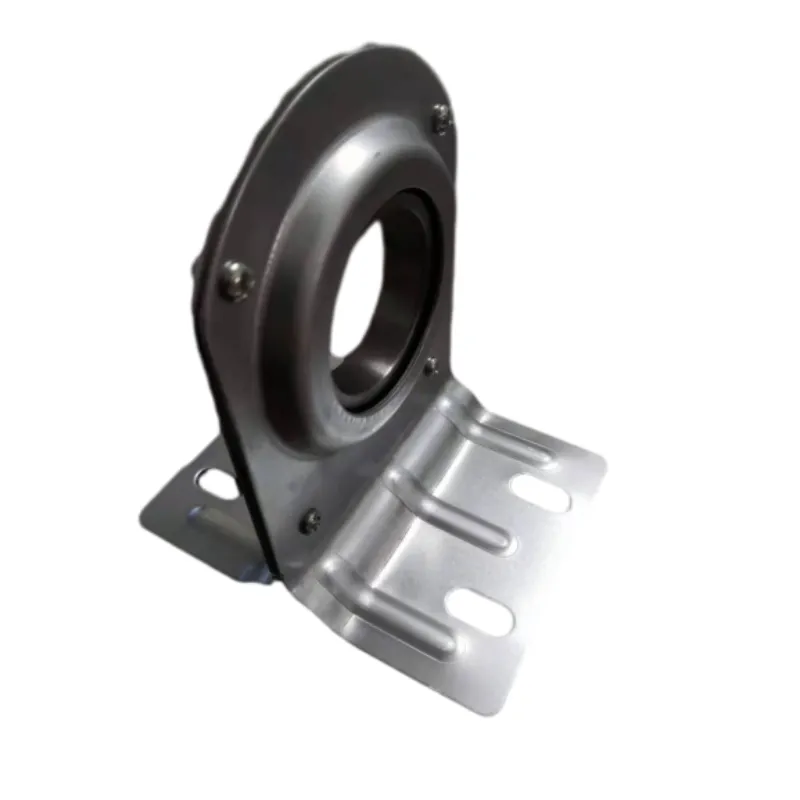
Dec . 21, 2024 00:11 Back to list
single row angular contact ball bearing
Understanding Single Row Angular Contact Ball Bearings
Single row angular contact ball bearings are crucial components in various mechanical systems, particularly in applications where high precision, rigidity, and the ability to handle both radial and axial loads are essential. These bearings are designed with their rolling elements (balls) arranged in a single row and are specifically structured to support thrust loads in addition to radial loads. This unique design feature makes them highly sought after in industries such as aerospace, automotive, and precision machinery.
Design and Functionality
The primary attribute of single row angular contact ball bearings is their angular contact geometry, which allows them to accommodate axial loads more effectively than traditional radial ball bearings. The contact angle, which is the angle between the line of action of the load and a line perpendicular to the bearing axis, defines the bearing's capability to handle these types of loads. A larger contact angle typically indicates a higher capacity for axial loads, making these bearings versatile in various load conditions.
The design incorporates an inner and outer ring, each with a raceway where the balls sit. The balls roll smoothly within these grooves, minimizing friction and wear, thereby enhancing the bearing's operational efficiency and lifespan. The precise arrangement allows for higher rotational speeds, which is particularly advantageous in high-performance applications.
Load Capacity and Performance
Single row angular contact ball bearings are engineered to support combined loads. This means they can effectively work under conditions where both radial and axial forces are present. For example, in electric motor applications, these bearings endure radial loads from the motor's weight while simultaneously supporting axial loads resulting from its operation. The ability to manage this dual load makes them ideal for high-speed, high-load scenarios, which are commonplace in modern machinery.
single row angular contact ball bearing

The load rating of these bearings is a critical factor in their selection process. It is essential to choose a bearing that can handle the specific load requirements of an application without risking premature failure. Factors such as speed, load direction, and environmental conditions influence the overall performance and longevity of the bearings.
Applications
Single row angular contact ball bearings are prominent in a variety of applications. They are widely used in spindle designs in machine tools, where they contribute to precision and stability during machining operations. In the automotive industry, these bearings are commonly found in gearboxes, steering columns, and wheel hubs, where their ability to manage thrust and radial loads is invaluable.
In aerospace applications, the need for reliability and performance under varying load conditions makes these bearings indispensable. They are employed in aircraft engines and landing gear systems, where they ensure smooth operation and safety. The medical field also utilizes these bearings in high-speed dental drills and imaging systems, where precision is paramount.
Conclusion
In conclusion, single row angular contact ball bearings play a vital role in modern engineering and manufacturing industries. Their ability to handle both radial and axial loads, combined with their high-speed capabilities, makes them an essential choice for applications requiring precision and reliability. Proper selection, installation, and maintenance of these bearings are crucial to maximizing their performance and extending their service life. As technology advances, the demand for such high-performance components will continue to grow, solidifying the importance of single row angular contact ball bearings in various sectors.
Latest news
-
Premium Deep Groove Ball Bearings | High Speed & Reliability
NewsAug.29,2025
-
Durable Scaffolding Clamps - Secure & Reliable Tube Connectors
NewsAug.28,2025
-
Common Failures in Thrust Ball Bearings and Solutions
NewsAug.22,2025
-
How Tapered Roller Bearings Can Take Shock Loads
NewsAug.22,2025
-
Angular Bearings in High-Precision Spindles
NewsAug.22,2025
-
The Impact of Misalignment on Cylindrical Roller Bearing Performance
NewsAug.22,2025
